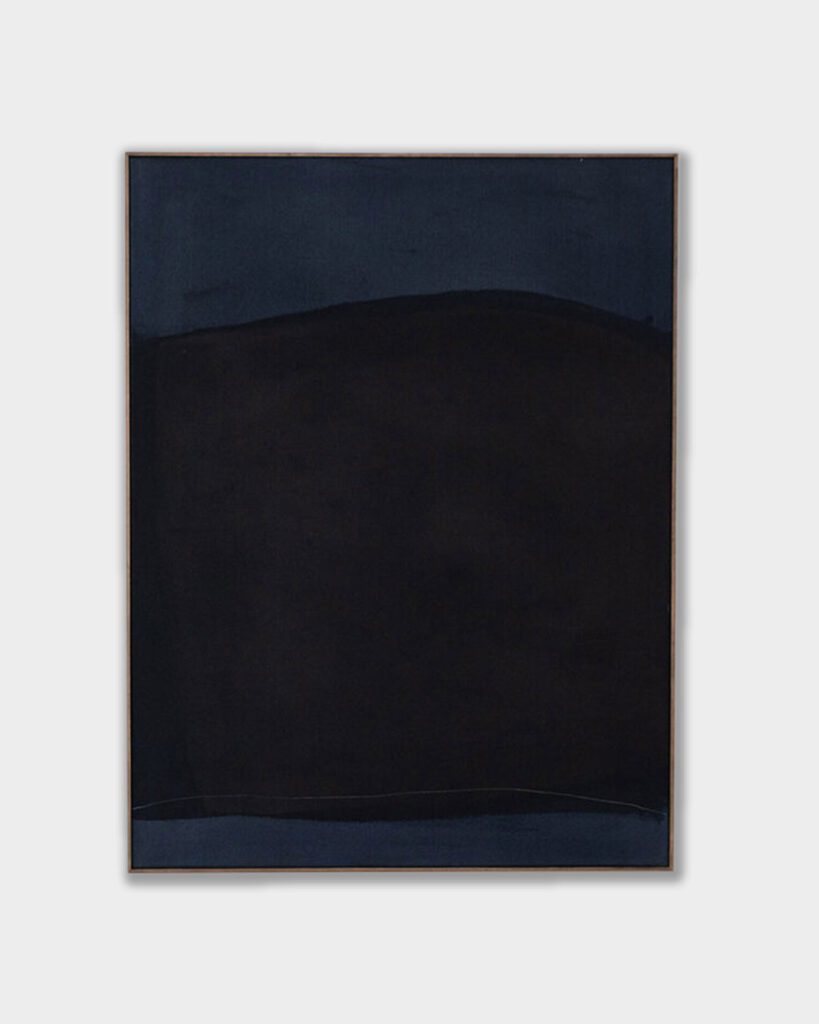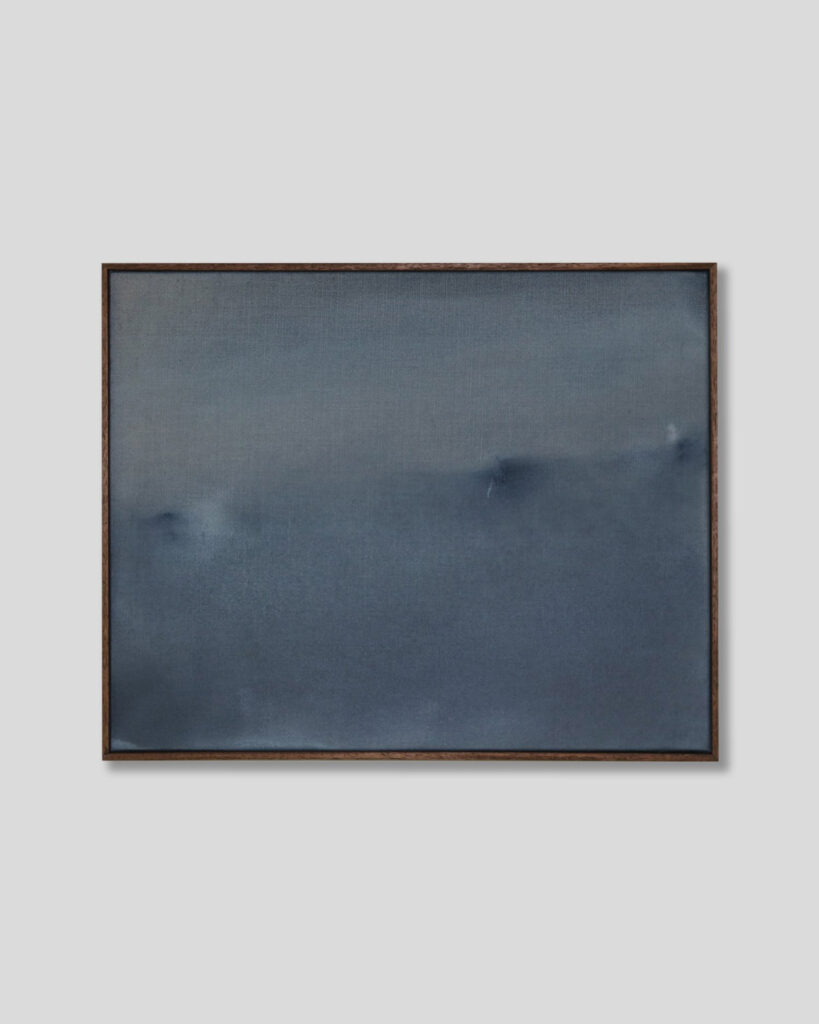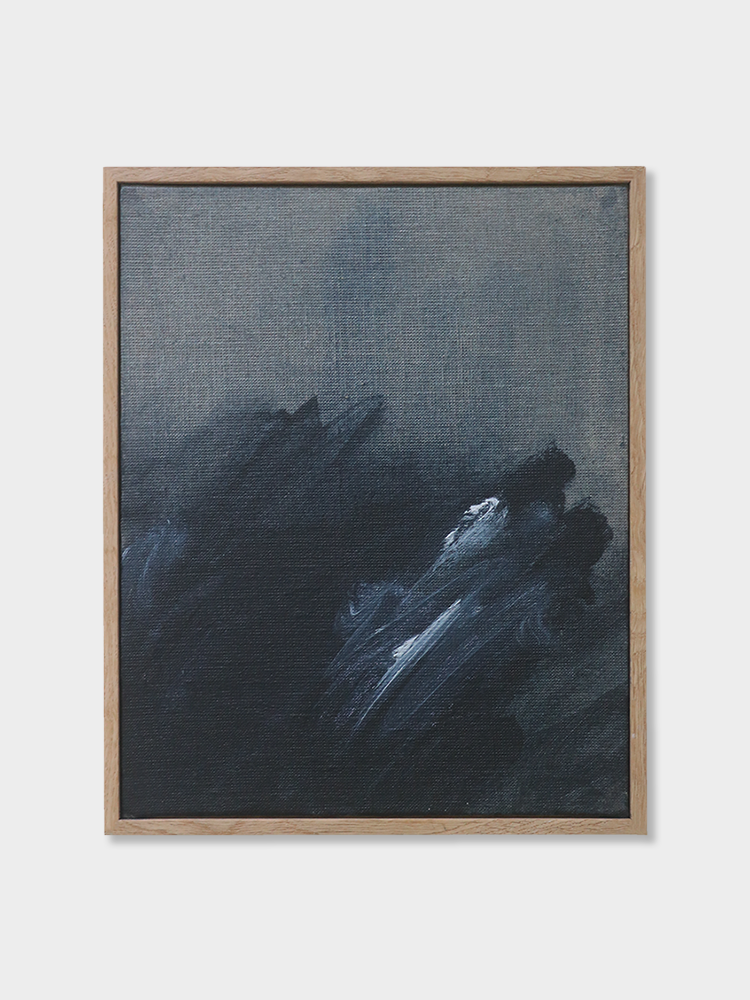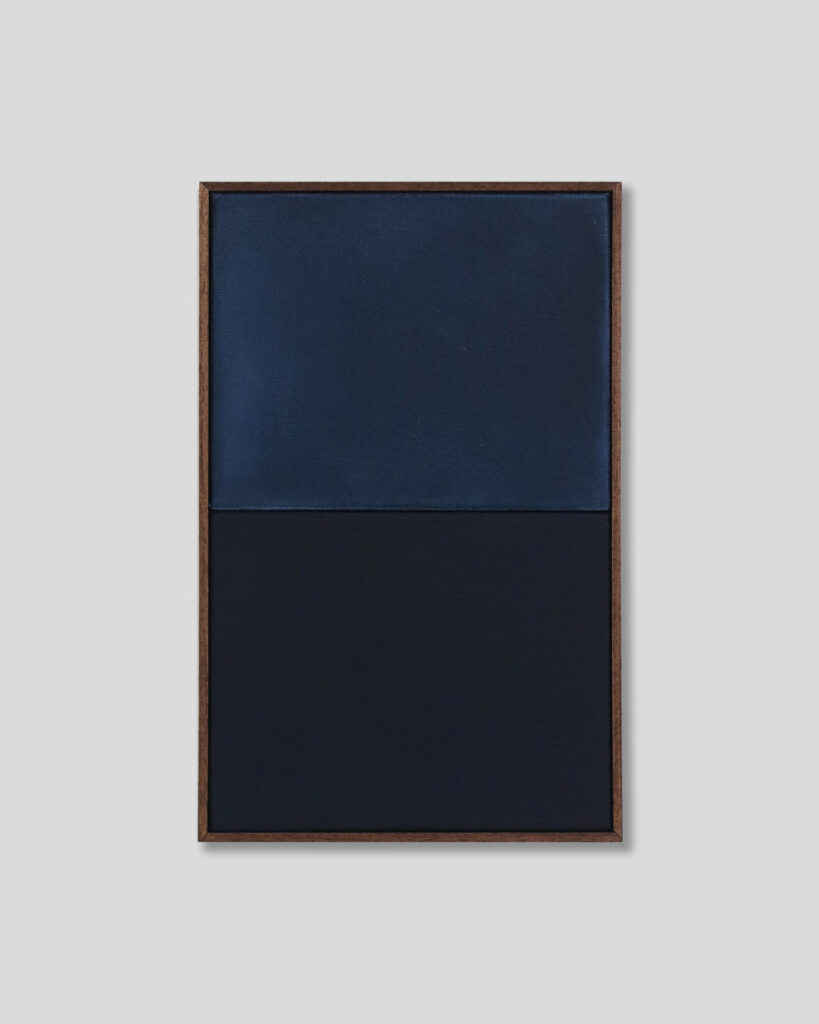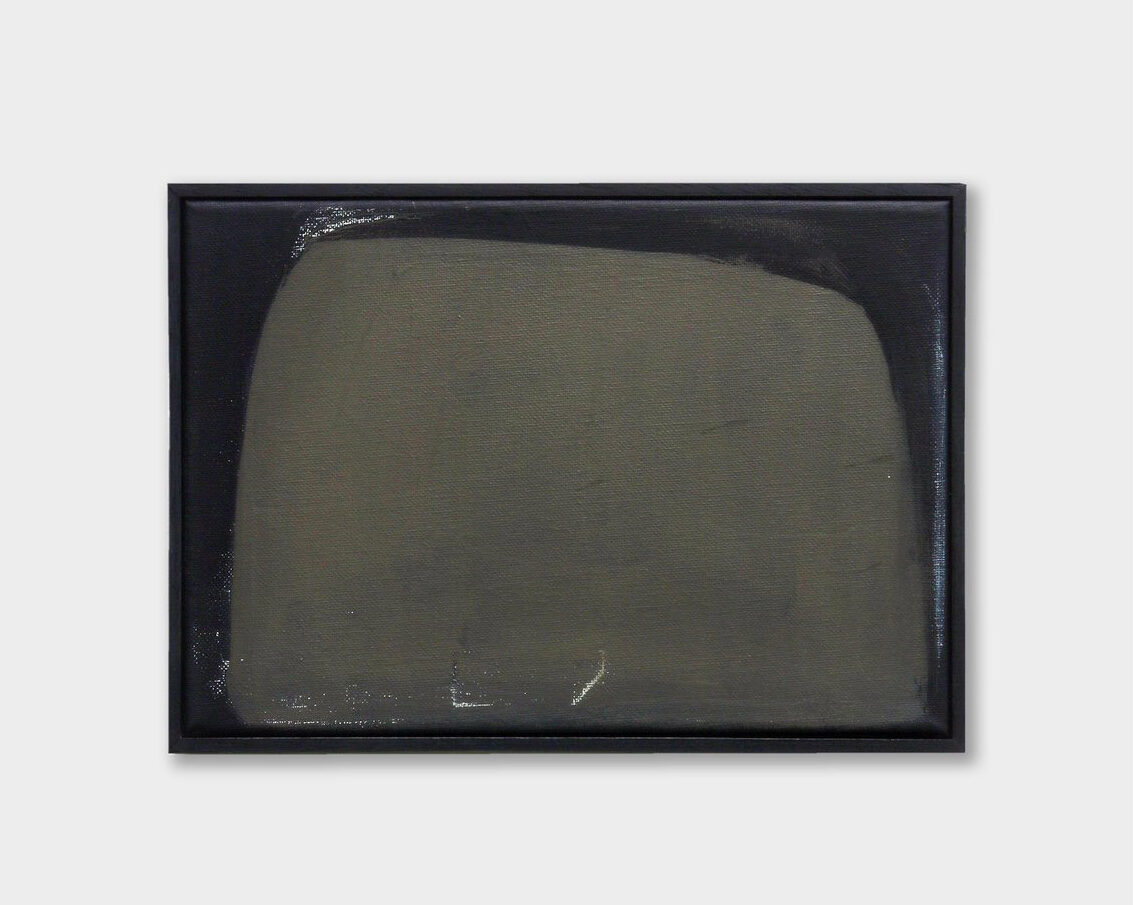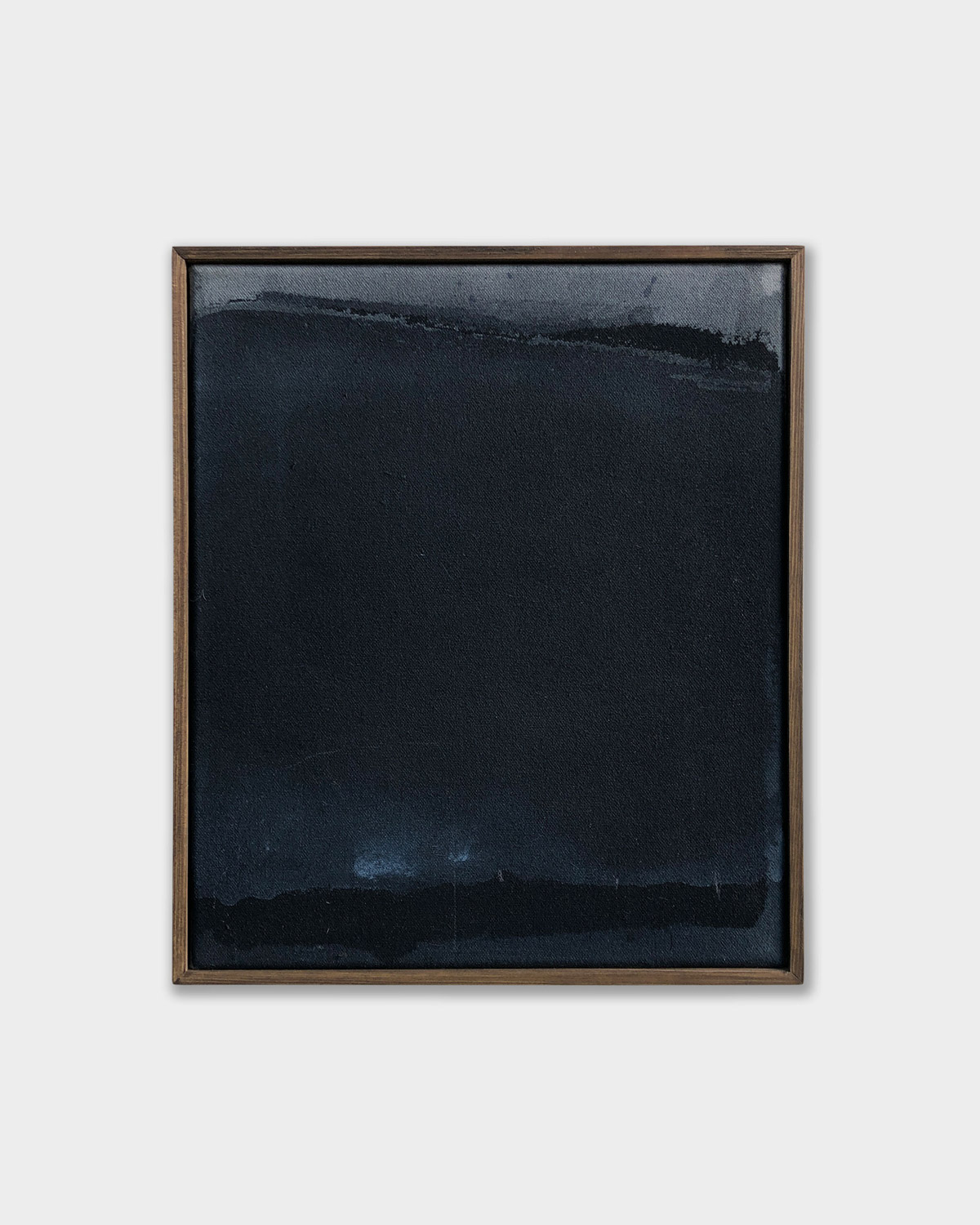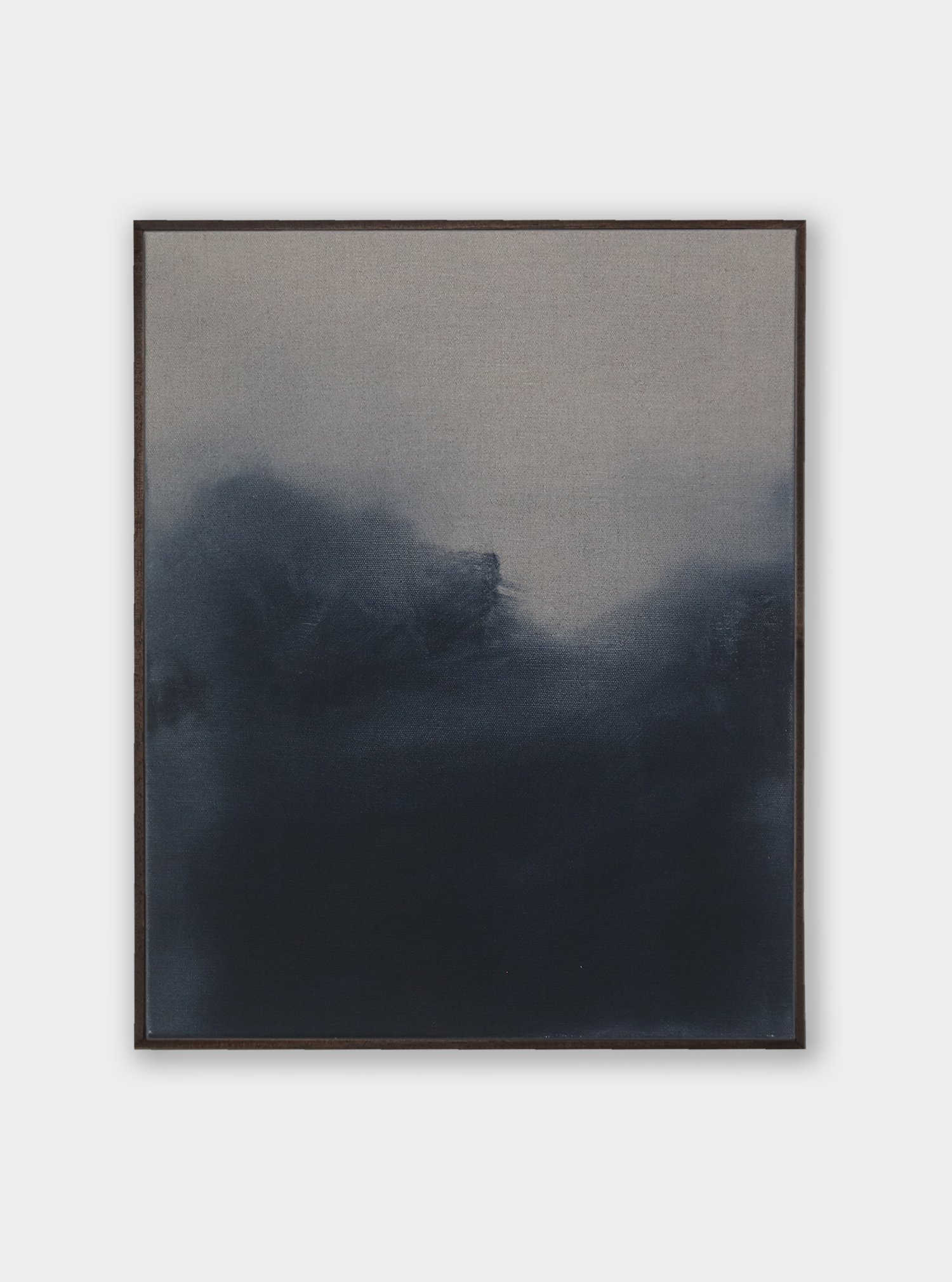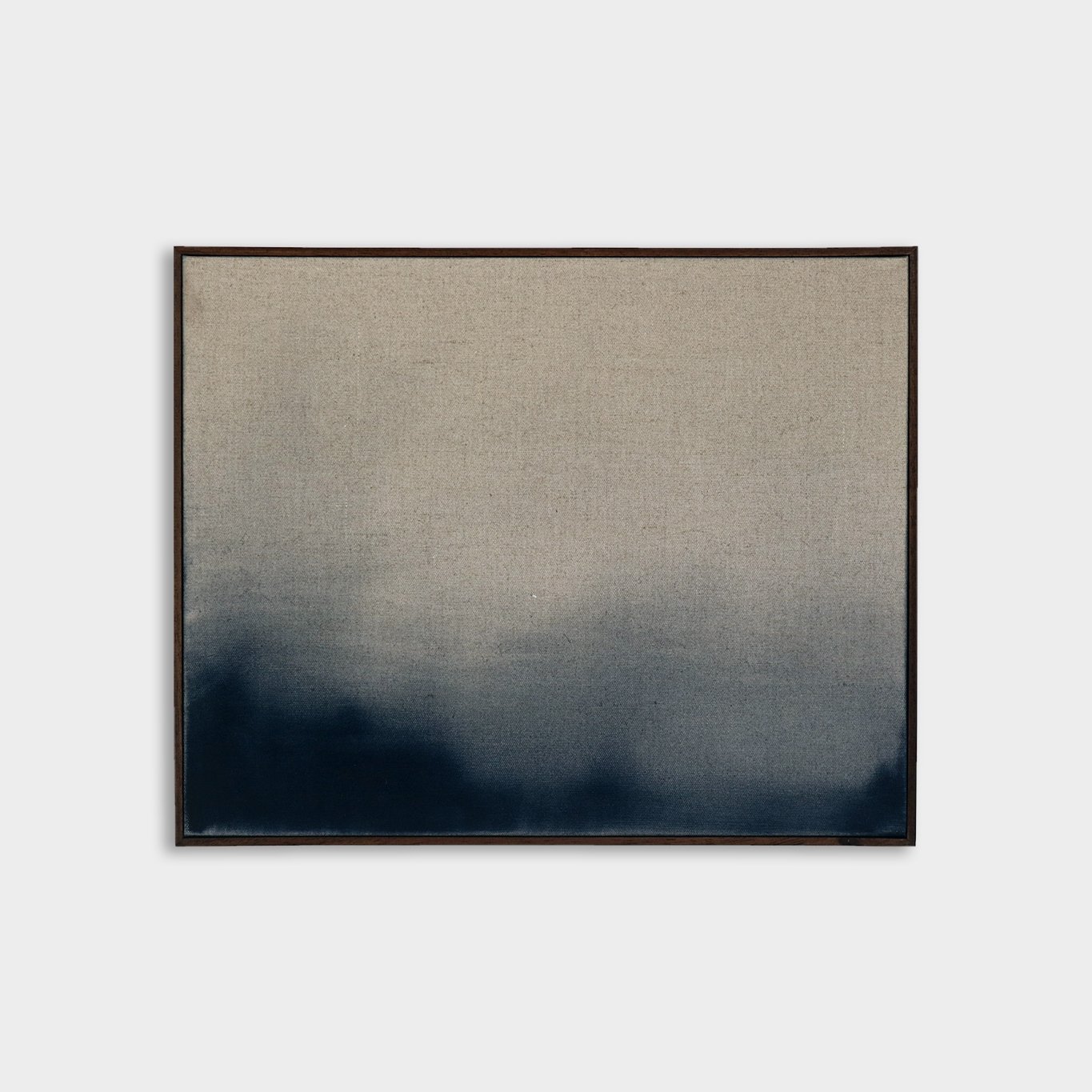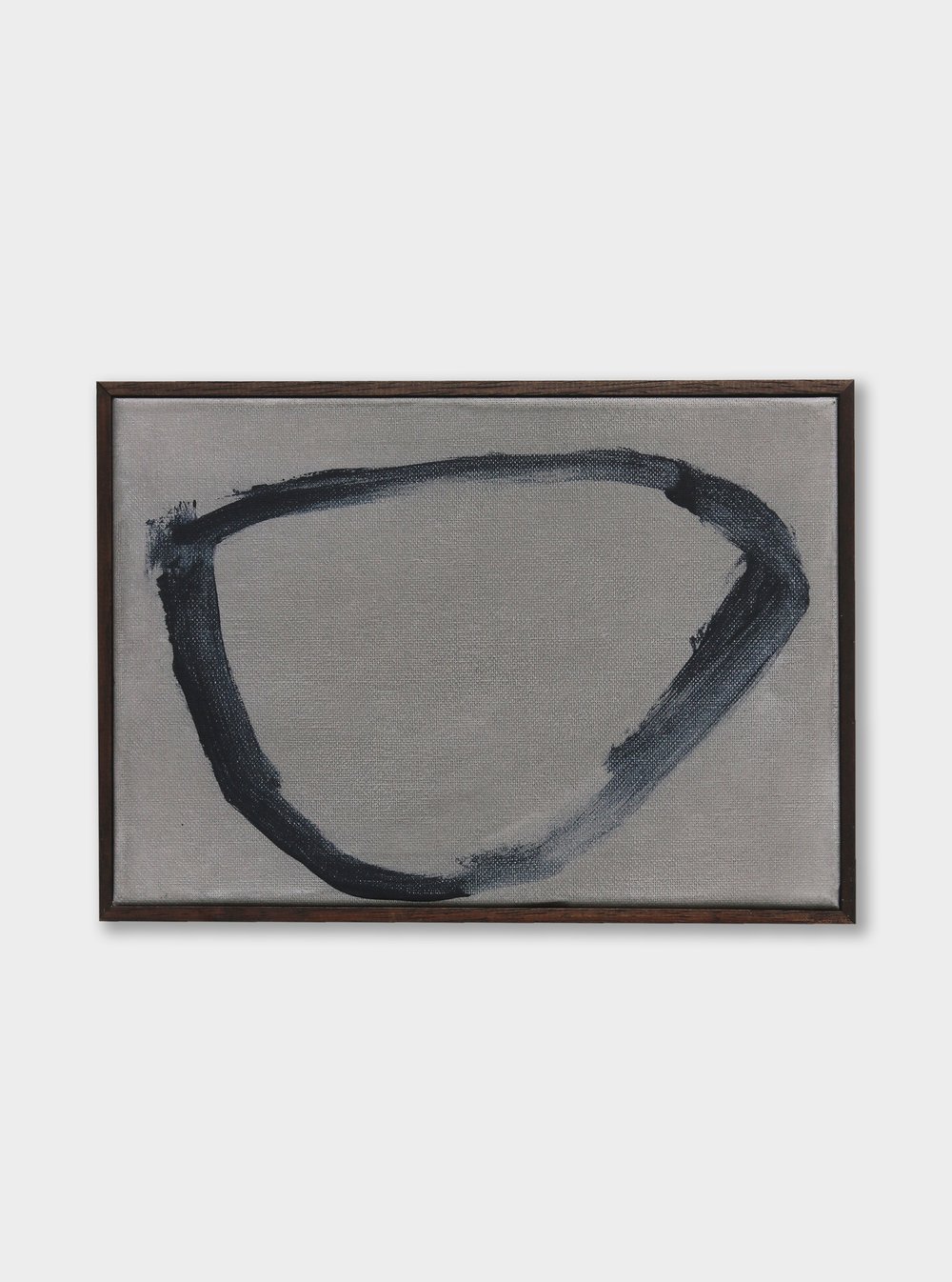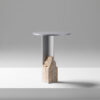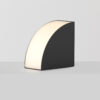In the latest edition of our interview series, we once again dive into the world of minimalist aesthetics. In inspiring conversations with creative minds from the fields of architecture, design, and art, we explore how they are guided by their vision and how they express it in their works. Along the way, they provide us with interesting insights into their creative process and reveal how they perceive and shape the world. This time, I had the pleasure of having an inspiring conversation with British artist David Hardy.
David Hardy (b. 1968) lives and works in the foothills of the Cambrian Mountains in West Wales. He finds inspiration in his surroundings and creates minimalist and emotive works with a reduced color palette. David’s paintings are as much about the process of creating a piece as the end result. His abstract paintings capture moods and atmospheres that transport the viewer into a unique, emotional world.
I spoke with David about how his artistic journey began, how he developed his unique style and why he chose a mostly monochromatic color palette.
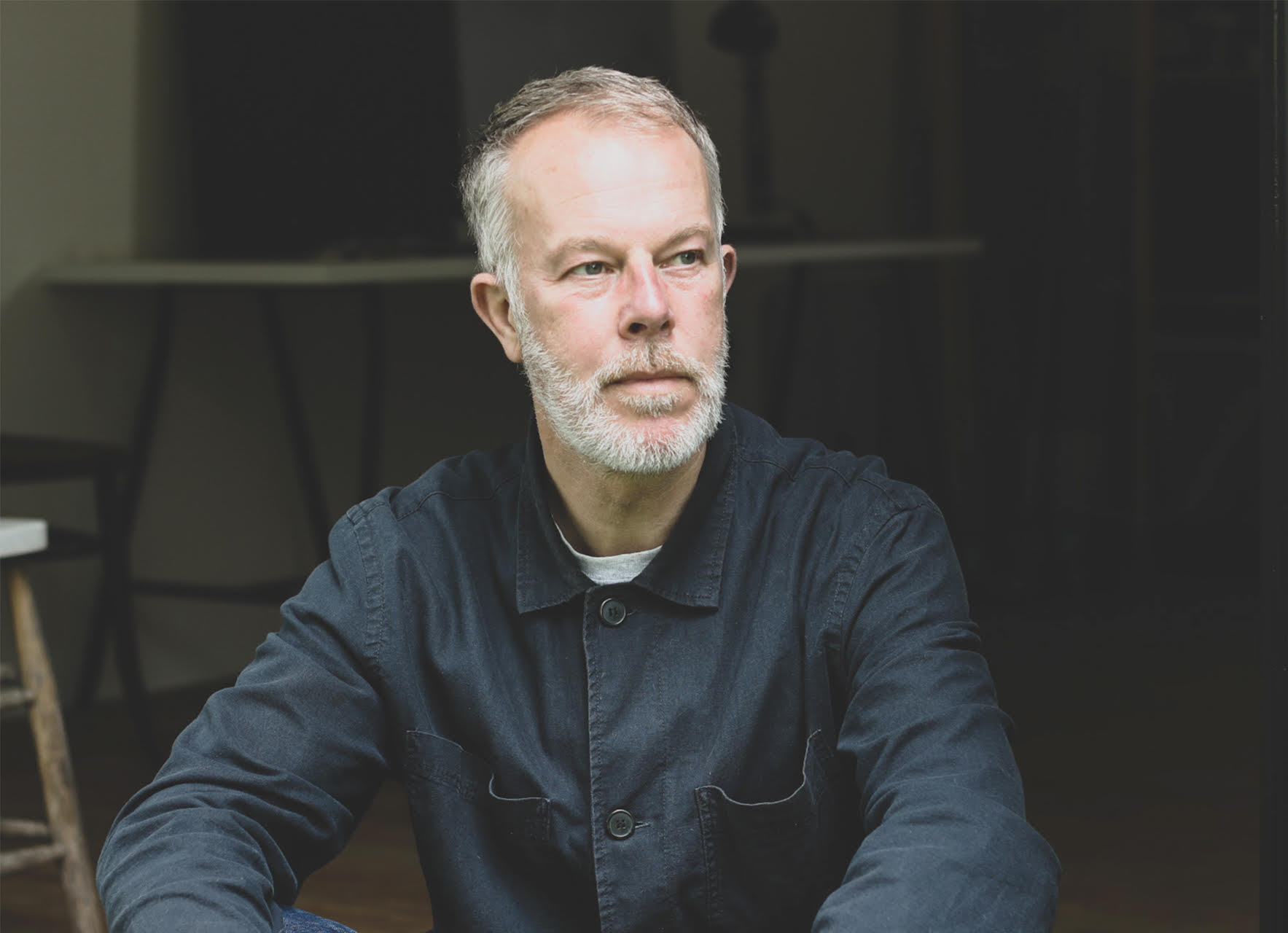
David, I’m delighted to talk to you today about your work! Please tell us how your artistic journey began. Was there a defining moment that led you to become an artist?
Hi Sarah, thanks so much for inviting me to share some of my story with you and your readers.
I was always drawing & making stuff as a kid and I remember so clearly sitting on the arm of my Dads chair watching him draw cartoon characters and getting so excited at seeing his creations appear in front of me.
I was in my 20’s on a Foundation art course that I decided I wanted to be an artist. I was painting at home one day and I had an experience that I would describe as an epiphany. Whilst painting, I felt a sense of ecstasy and being outside of everyday reality along with an incredible sense of serenity. It was at this moment I decided I would concentrate all my effort into this area of my life.
How has your artistic style evolved to this day? Has your painting always been abstract?
I went on to study Fine Art Printmaking at Winchester School of Art and during that period I worked with video, photography, film and was producing audiovisual site-specific installations. I worked as an audiovisual technician and then a graphic designer for 15 years. It was when my wife & I moved out of London that I began painting again. I found myself incorporating my graphic design knowledge into my paintings & focused on shape, form & composition.
I’d say my style is always evolving, as I paint depending on my mood & how I feel. I’ve described my work as a language before, and some pieces are deep heavy conversations around the subject of life, death, grief etc… and others are one-liners, small talk, lighthearted observations.
Yes, my paintings have always been abstract. I paint to represent a feeling or capture or create an atmosphere. Since moving to rural Wales, I find my work references the landscape we live in. What I don’t want is to simply create another view of an existing place. The aim is to create a feeling that resonates with the viewer.
What I don’t want is to simply create another view of an existing place. The aim is to create a feeling that resonates with the viewer.
How would you describe your work to someone who has never seen it before?
I would describe it as a rigorous attention to formal elements such as color, shape, surface, balance, depth and composition. The work becomes a visual dialogue between myself and the audience, inviting interpretation in the hope it stimulates a powerful emotional response.
The color palette of your works is reduced and mostly monochrome. Why did you choose this color palette, and could you imagine experimenting with other colors in the future? If so, what would they be?
I use a limited palette as I’m aware how influential color can be, and I find this can be a bit overwhelming. I’m drawn to indigo as I feel it has a wealth of connotations, symbolism and history. Blue is nonthreatening and used in the right way, it can create a deep emotional connection. I’ve yet to find another color other than blue that suits the range of emotions that I wish to portray. I do experiment with other colors, however, I’m always drawn to a more muted palette. I think this is largely down to the influence of living in West Wales.
You say about your paintings that they should “show simplicity and struggle at the same time”. What exactly do you mean by that, and how do you manage to bring a balance to these two opposites in your works?
I like to think that my works incorporate a tension, sometimes controlled, other times not so much. This can range from the surface texture, marks, lines, brush strokes, colors, composition each one playing a part in creating a visual balance that pulls or pushes the viewer in around or away.
The absence of narrative elements in your works invites a meditative contemplation. Is meditation or mindfulness a part of your life?
Yes, very much so. My mental health is really important to me. I lost my father and my brother when I was young and this raised some big life questions for me and I spent most of my teens in a pretty turbulent place. I think when you lose a parent when you are a child you become a little more sensitive than other kids of your age. It teaches you the fragility of life and that’s a big lesson to learn at any age. Nowadays, I listen to a lot of mindful and well-being podcasts and spending time in nature helps me a lot… which also ultimately feeds back into my studio practice.
The work becomes a visual dialogue between myself and the audience, inviting interpretation in the hope it stimulates a powerful emotional response.
Take us into your studio. Please tell us how you begin a new artwork and how your painting process unfolds. Do you have a plan, or do you let your intuition guide you?
I generally start with a rough idea of what I’d like to achieve, then allow myself to be guided by intuition and chance. I like to allow the painting to take over and evolve within itself. I can then exploit or remove aspects of the work to achieve a desired outcome.
And finally: What are you currently working on, and what are your plans for the future? Are there any topics you would like to explore further?
I’m currently working a new body of indigo pieces which explore melancholy and memory. I’m really enjoying the ongoing form works, which are the perfect balance to my more emotive personal pieces. I’m excited to see where these go.
Thank you very much, David!
More about David Hardy
https://www.davidhardy.co.uk/
https://www.instagram.com/mr.dhardy/
Aesence Feature: David Hardy – Creating Atmosphere Trough Simplicity
